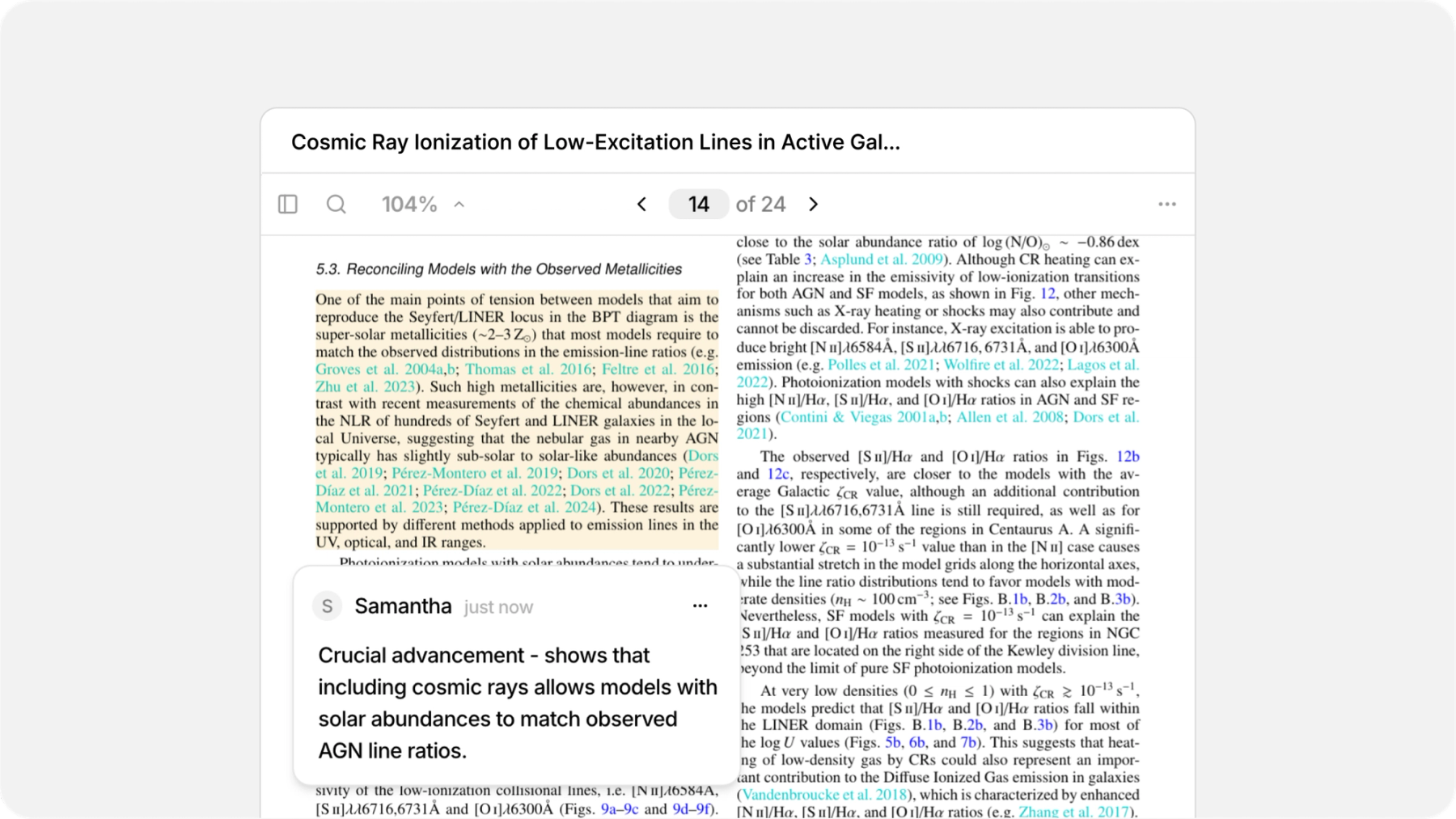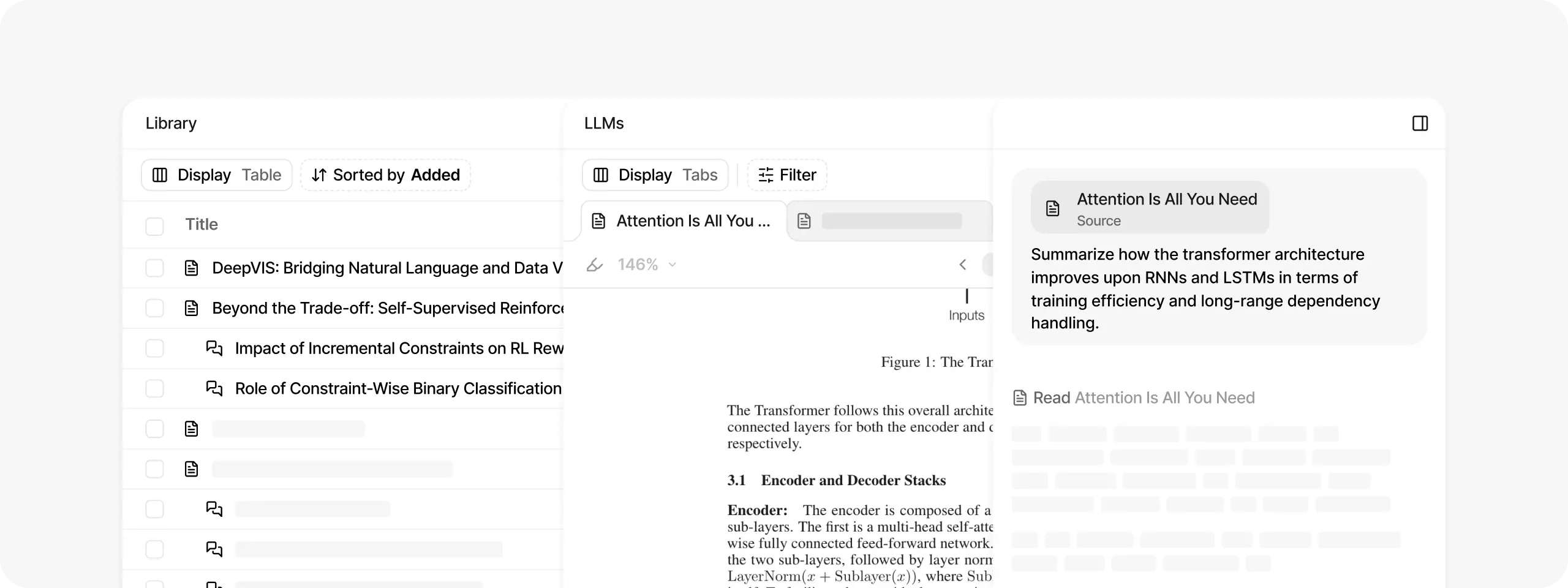How to fact-check AI-generated research summaries
When you ask ChatGPT to summarize your course readings it returns a polished response with impressive citations. But as you start writing your paper, doubt creeps in: Are these sources real? Did the AI actually read my materials?
You're right to be skeptical. The difference between safe and risky AI use comes down to one thing: verification. Here's how to fact-check AI responses.
Manual verification of AI sources (the old way)
When using general AI tools like ChatGPT, academic institutions recommend the following verification process for every AI summary:
Step 1: Hunt down every citation
Search each source across multiple databases:
- Your library's search tool
- Google Scholar
- Publisher websites
- Author websites
- General Google searches
Time cost: 15-30 minutes per citation
Step 2: Verify sources actually exist
Even if you find a matching author and journal, check that the specific title, page numbers, and publication dates are real. AI tools often mix real authors with fictional articles.
Time cost: 10-15 minutes per source
Step 3: Read original sources
If sources exist, read them to fact-check the AI didn't misrepresent their content. AI tools frequently paraphrase sources inaccurately.
Time cost: 20-45 minutes per source, depending on length
Step 4: Cross-reference claims
Check that statements match across sources and identify any contradictions the AI missed.
Time cost: 30+ minutes for complex topics
Total time: 2-4 hours to safely verify a single AI summary. This defeats the entire purpose of using AI for efficiency.
Instant verification (the Anara way)
With Anara, source verification happens automatically because the AI only analyzes documents you upload and links every response to a specific source.

Step 1: Upload your materials
Set up Anara free account and add research papers, course readings, lecture slides, videos, or audio files to your library.
Time cost: 30 seconds per document
Step 2: Ask questions
Query your materials using plain language: "What are the main findings?" or "How do these studies compare?"
Time cost: 20 seconds
Step 3: Get verifiable responses
Every claim in Anara's response includes clickable source highlighting that links to exact passages in your uploaded documents.
Time cost: Instant verification with every response
Step 4: Click to fact-check AI generated responses
Want to check a claim? Click the highlighted text to jump directly to the source location in your original document.
Time cost: 2 seconds per verification
Total time: Under 5 minutes to get verified insights from any number of documents.
Within just four days, I completed writing that would normally have overwhelmed me and caused significant delays.
Medical student using Anara for literature reviews
Start analyzing your research materials with verified sources
Get Anara freeWhy does fact-checking AI responses matter?
The hallucination crisis
According to Columbia College's AI guidance, generative AI tools "create citations which are incorrect, and make up citations to non-existent sources." They might cite a real author in a legitimate journal, but fabricate the article title, page numbers, and publication dates entirely.
Academic integrity at risk
Universities warn that using fake AI-generated citations constitutes plagiarism. It’s a serious academic integrity violation. As these fabricated sources become more sophisticated, they're harder to spot without proper AI tools providing sources.
The scale problem
With AI tools generating thousands of research summaries daily, the manual verification process doesn't scale. Students and researchers need efficient ways to trust AI insights without spending hours fact-checking every claim.
Legal and reputation consequences
Beyond academic settings, using unverified AI content may lead to legal risks, reputational damage, and professional credibility loss when fake information spreads through trusted channels.
See how verifiable source highlighting works with your documents
Get Anara freeWhat is verifiable source highlighting?
Verifiable source highlighting is a feature in advanced AI research tools and citation management tools that enables users to see exactly which parts of a response or summary are backed by specific sources. This capability is especially valuable in academic and scientific research, where transparency and traceability of information are critical.
How does it work?
When an AI generates a response (such as a summary, answer, or citation), it marks or highlights sections of the text and links them to the original sources. Users can click or hover over the highlighted text to view the source, citation, or even the exact passage from the original document. This makes it easy to verify the accuracy of information, check context, and ensure proper attribution.
What are the benefis of using fact-checking AI?
- Transparency: Users can immediately see where information comes from, reducing the risk of misinformation.
- Trust: Builds confidence in AI-generated or summarized content, as every claim can be traced to its source.
- Efficiency: Saves time for researchers and students by eliminating the need to manually cross-check sources.
- Academic integrity: Helps maintain high standards for citation and reduces accidental plagiarism.
What are typical use cases?
- Academic writing and AI literature reviews
- Collaborative research projects
- Systematic reviews and meta-analyses
- Grant writing and scientific reporting
Verifiable source highlighting is becoming an essential feature in modern reference managers and research tools, supporting rigorous, transparent, and efficient scholarship.
Frequently Asked Questions
Is using Anara considered cheating or plagiarism?
Anara helps you analyze and understand your own course materials and research papers faster. The learning and insights are still yours—it's like having a research assistant that helps you find information in your documents more efficiently. Always check your institution's AI policy and cite Anara in your work if required by your school.
How does Anara prevent AI hallucinations completely?
Unlike general AI tools that work from memory and can fabricate sources, Anara only analyzes the documents you upload. It cannot hallucinate citations because it's physically impossible for it to reference sources outside your uploaded materials. Every response is grounded in your actual documents.
Related: Compare Anara vs ChatGPT.
What types of files can I upload and verify?
Anara works with research papers (PDFs), course readings, lecture slides (PowerPoint), textbook chapters, videos (including YouTube URLs), audio recordings, and images. This means you can verify insights across all your course materials, not just text documents.
Do I still need to fact-check Anara's responses?
No traditional fact-checking required. Since Anara only works with your uploaded documents, you can click any highlighted claim to see the exact source passage instantly. The verification happens in real-time as you read responses, not through hours of manual database searches.
Can Anara handle large research libraries with hundreds of papers?
Yes. Researchers regularly use Anara with libraries containing 200+ papers. The source highlighting works across your entire library, so you can ask questions that span multiple documents and get verifiable responses that show exactly which papers contributed to each insight.
